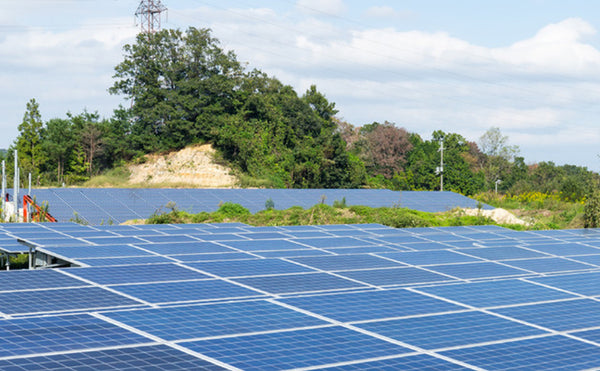
Where is the Destination of Scrapped Solar Panels
With the rapid development of solar energy industry, the "e-waste" generated by it is also accumulating rapidly. How to deal with the discarded panels in the world still has no clear and unified answer. At present, the number and scale of discarded solar panels in the e-waste market are still small, but their growth rate is the fastest. The industry is worried that with the acceleration and deepening of the global green transformation, the application of solar energy is becoming more and more extensive, and then the disposal of a large number of scrapped panels will become unbearable for the solar energy industry.

The International Renewable Energy Agency (IRENA) points out that worldwide solar installed capacity continues to grow, but there is no large-scale solar panel scrapping program. If this situation is not changed, at least 78 million tons of "solar e-waste" will be discarded by 2050, and the United States will contribute 10 million tons of it. And the Harvard Business Review points out that recycling a solar panel currently costs about $20-$30, while sending it to a landfill costs only $1-$2, making the solar industry less obsessed with recycling.
In fact, the disposal of discarded solar panels is undermining the economic benefits of solar power generation, even if it is subsidized, the disposal of discarded solar panels is lowering the benefits of solar energy. Harvard Business Review predicts that by 2031, the actual number of discarded solar panels will exceed that of newly installed solar panels, and by 2035, the number of discarded solar panels will be 2.56 times that of newly installed solar panels.
The design life of solar panels is usually 25-30 years. To some extent, the price and efficiency of solar panels can influence the speed of consumers replacing new panels. If the cost of buying new and more efficient solar panels is low enough and the solar grid price is attractive enough, consumers will choose to replace new panels instead of extending the service life of existing panels, which means that more and more panels that have not yet expired will quickly enter the stage of scrapping and recycling, which is only the use of solar panels in domestic homes. If we consider commercial and utility-scale solar projects with incentive mechanisms, the scale of waste and decommissioning will be incalculable.

Under this background, it is very important to establish a perfect and reasonable solar panel recycling system. Globally, the supervision of solar equipment scrapping is complicated. On the one hand, it varies according to jurisdictions. On the other hand, there is no clear division of the treatment cycle and responsibility of such e-waste. At present, the most common supervision mechanisms are extended producer responsibility system and landfill transfer policy. The industry generally believes that only by reducing the uncertainty of recycling can we deal with the problem of solar panel scrapping more appropriately For example, solar equipment manufacturers can be urged to provide photovoltaic module labels with hazardous material concentrations through incentives.
In addition, the design of solar panels also lacks the support of relevant policies and regulations, which makes recycling expensive and laborious. Some countries have classified solar panels as hazardous wastes. Hazardous wastes can only be transported at a specified time and through a selected route, and then the unforeseen costs such as demolition, transportation and professional treatment are included. The overall scrapping price is not cheap, which virtually raises the use cost of solar energy and will greatly weaken the competitiveness of solar energy industry.
With the rapid development of solar energy industry, solar panels will be scrapped faster than expected and on a larger scale in the future. At the same time, not only the United States, but also countries all over the world should formulate relevant recycling incentive policies and measures and develop enough recycling infrastructure. Only by creating a profitable recycling market can the cleanliness and sustainability of the solar energy industry be best reflected. As a leading manufacturer of the solar industry, XINPUGUANG will take the responsibilities for the green production and recycling of solar panels and insist the philosophy of “absorbing sunshine, focus on energy, and return the earth a green place.” Keep following us to learn more.
Facebook: Xinpuguang Solar Panel
Instagram: xinpuguangsolar
Pinterest: XinpuguangSolarPanels
Homepage: https://xinpuguangsolar.com
Email address: Philip@isolarparts
- Le choix d'une sélection entraîne une actualisation complète de la page.
